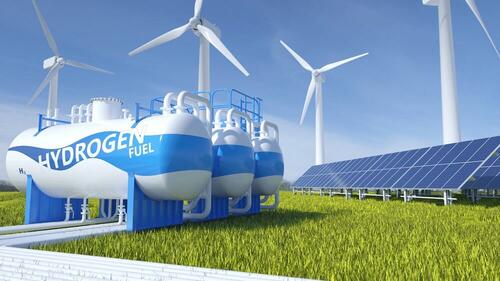USD 21 trillion: this is the amount needed to adapt grids to the energy transition

For the energy transition to happen, the world needs a massive overhaul of the electricity grid. This message was overlooked for years as wind and solar stole the show, but now it's back on the agenda. Because without a massive grid overhaul it is not possible to move from baseload and dispatchable electricity generation to distributed and intermittent generation.
In 2020, BloombergNEF estimated the cost of that overhaul at $14 trillion over the thirty years between 2020 and 2050. That's how much it would cost to build the millions of miles of new transmission lines and related infrastructure to accommodate the projected increase of wind and solar energy.
This is in 2020. Now the price of the network overhaul has risen to an estimated $21 trillion, also according to BloombergNEF. Indeed, to reach grid zero by 2050, the world would need to double the length of operational transmission lines to 152 million km. This means that, as things stand today, we have little chance of reaching net zero by 2050.
For starters, the money for these massive investments in network adaptation has to come from somewhere. They can't all come from government subsidies: Building new transmission lines costs billions. Currently, three new electricity transmission projects are underway in the United States with a total price tag of $13 billion.
And then there's the local opposition to these projects, which makes getting off the ground even more difficult. People don't like transmission lines running over their lawns, and that's about it. He also doesn't like that forests have to be cleared for the new line. It's the pinnacle of NIMBY-ism, and there's very little you can do except hope you don't get to the BANANA state: “build absolutely nothing anywhere near anything”.
But suppose some money can be found from environmentally conscious investors and governments, and suppose NIMBY can be negotiated, perhaps financially. There is a bigger problem than these and both together. A lack of skills.
There aren't enough skilled engineers — the people who build and maintain transmission lines. In places like Australia, there aren't enough people to build the wind and solar farms that the transition to net zero would require. And the pace at which people are acquiring these essential transition skills is lagging far behind transition plans, the FT reported earlier this week.
Each of these challenges alone can derail the transition by delaying the vital network upgrade. Taken together, they make the transition – at least as currently planned in the West – nearly impossible to achieve.
But they are not the most immediate challenges, not for the transition but for our usual lifestyle. The most immediate challenge is power outages. That's because, despite the need to upgrade the grid and adapt it to the growing amounts of wind and solar power that feed it, the balance between base-load and intermittent generation is shifting in a way that makes the grid unstable.
Simply put, reliable 24/7 power generation capacity is declining faster than the grid is adapted to intermittent wind and solar, and faster than new generation capacity is built. wind and solar generation. To say that this situation is not exactly optimal for a healthy energy supply is an understatement.
Compared to these challenges, authorization is a small matter. Regulation can be changed if there is enough momentum for change. However, small or not, permitting procedures are on the list of things preventing the energy transition from happening in its most important part: the grid.
According to an April report from Lawrence Berkeley National Laboratory, there are 1,300 GW of new wind, solar and storage capacity waiting to be connected to the grid. However, most of these plants will never be built. Because joining the interconnection queue is just the beginning of a process that takes years and doesn't always have a happy ending.
According to the report, "projects also need to enter into agreements with landowners and communities, energy buyers, equipment suppliers and lenders, and may face transmission upgrade requirements."
On the surface, the energy transition looks so simple. Just build a bunch of wind turbines and a row of solar panels, pop in a battery here and there, and switch from gas heaters to heat pumps. We electrify everything we can electrify and discard the rest.
Beneath the surface, things look very different indeed. There aren't enough raw materials to build all the wind and solar capacity and batteries. There are not enough people to physically complete the construction. There aren't enough people to build the many new transmission lines. The money for all these things still needs to be secured.
Until all of these problems are permanently resolved, net zero will remain a fantasy, and no amount of activism and investor pressure on companies to disclose their emissions is going to change that.

Thanks to our Telegram channel you can stay updated on the publication of new articles from Economic Scenarios.
The article USD 21 trillion: this is the amount needed to adapt networks to the energy transition comes from Scenari Economici .
This is a machine translation of a post published on Scenari Economici at the URL https://scenarieconomici.it/21-mila-miliardi-di-usd-questa-e-la-cifra-necessaria-per-adattare-le-reti-alla-transizione-energetica/ on Fri, 02 Jun 2023 07:00:06 +0000.
